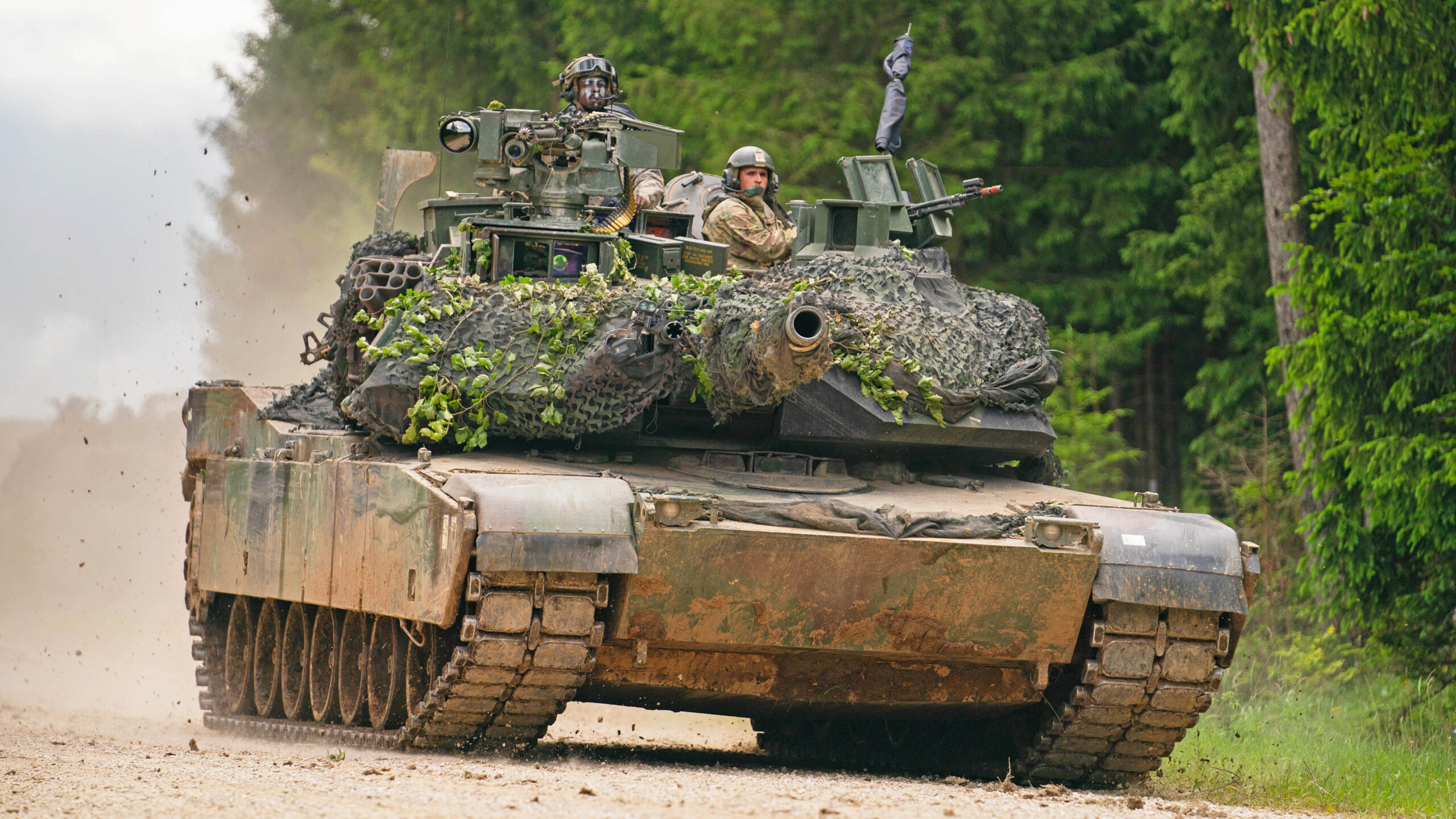The first of Ukraine’s U.S.-supplied M1 Abrams main battle tanks appear to be on track to go into combat starting from mid-September, with the news that a cadre of Ukrainian crews have finished their training on them. Meanwhile, as we have reported in the past, 31 Abrams tanks destined for Ukraine — all older M1A1 variants — have been undergoing refurbishment and preparation for delivery.
According to a report from Politico yesterday, citing information from spokesperson Col. Martin O’Donnell, around 200 Ukrainian Armed Forces personnel have undergone training at different U.S. Army facilities in Germany. The report added that these soldiers “recently completed one of the last phases of the program, a combined arms, battalion force-on-force exercise at Hohenfels Training Area.”

Hohenfels in Bavaria is home to the U.S. Army’s Joint Multinational Readiness Center (JMRC), which is the only Army Combat Training Center of its kind outside the continental United States. It covers around 63 square miles and includes 1,345 buildings for training, 200 miles of road, and multiple cross-country trails.
O’Donnell added that those same soldiers that have trained on the M1 at Hohenfels are now at the U.S. Army base in Grafenwoehr, also in Germany, where they are continuing training to ensure they are fully proficient on the complex tanks when they start to be delivered to Ukraine.

Last month, U.S. Army Acquisition Chief Doug Bush said that the first batch of Abrams tanks were slated to arrive in Ukraine by “early fall.” In July, meanwhile, there had been reports that the tanks would arrive on the battlefield sometime in September.
Quoting an unnamed Pentagon official and “another person familiar with the discussions,” Politico now reports that the first 10 of these tanks will arrive in Ukraine in mid-September.
The same Pentagon official said that this batch of tanks was now “undergoing final refurbishments,” after which they can be dispatched to Ukraine, with the remaining 21 examples of the Abrams also due to arrive in-country during the fall.

As regards the first batch, this latest information seems to run counter to what Doug Bush said last month, which implied that all the required work on these fighting vehicles had been “done,” allowing the U.S. government to officially approve them for transfer.
One reason could be that Bush was referring to the tanks themselves, rather than the other various items of support equipment needed to run them. These include spare parts, fuel equipment, and repair facilities — not to mention ammunition.
Overall, though, efforts have been made to expedite the delivery of Abrams to Ukraine, primarily through the decision to supply refurbished M1A1 variants, rather than newer M1A2 types, as you can read more about here.
President Joe Biden initially approved delivery of the Abrams tanks to Ukraine in January and, since then, we have looked in detail at what exactly they can bring to the battlefield.

With the three-month-old counteroffensive making slow progress, there are clearly hopes that the M1s could make some kind of difference to the course of the conflict. In particular, the Abrams should be well suited to smashing through the formidable Russian defenses, although even with advanced Western armor, this is by no means an easy task. With just 31 being donated, some have posited that they will be a bigger burden than a boost, but it’s possible, if not probable, that more M1s will be offered once the initial cadre is stood up.
The M1s are not the only advanced Western tanks that will be available to Ukraine as the counteroffensive continues. British Challenger 2s and German-made Leopard 2s are already involved in the campaign.
There has also been more positive news of late from the southeast of the country, where U.S. and Ukrainian officials say that Ukrainian forces have, for the first time, penetrated Russia’s main defensive line.
For the Ukrainian Armed Forces, Western-supplied armored vehicles like the Abrams are critical to what happens next in such scenarios, namely working to penetrate wider and further into these breaches in the Russian lines, backed up with the required logistical support.
Despite recent advances in the southeast, there are voices of caution here, too, with U.S. officials warning that there will be more demanding challenges to come, especially bearing in mind the fact that Russian defensive positions continue to stretch across a front line that measures 600 miles or so. These positions are typically fortified with minefields, anti-tank obstacles, and trenchworks, with cover from plentiful artillery and helicopter gunships. The latter, in particular, continue to extract a heavy toll on Ukrainian armor.
With that in mind, it’s no surprise that the Ukrainian Armed Forces are keen to get their long-awaited M1s into action sooner rather than later. They will be buoyed by the news that their delivery — as well as the return of fully trained crews — is still on schedule for later this month. With time dwindling before the rains come and turn large swathes of the battlefield into a muddy bog, it wouldn’t be surprising if the M1s head to the front right after their arrival.
Despite the many difficulties ahead, Ukrainian tank crews will also be confident that, in the M1 Abrams, they have a fighting vehicle that offers significantly more capability than the Soviet-era tanks that make up the bulk of their fleet. Even in its older M1A1 in export form — lacking depleted uranium armor — the Abrams will be far better at fighting at night and offer much higher levels of protection, for example.
The countdown to the Abrams actually joining the fighting in Ukraine is now very much on.
Contact the author: thomas@thedrive.com
